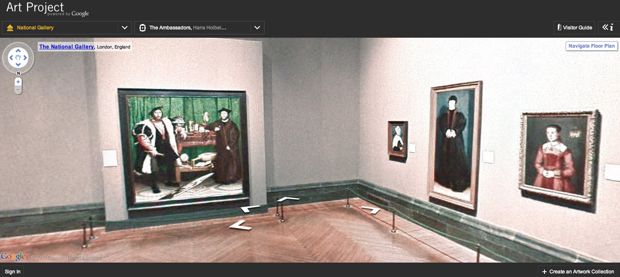Ever been to the Freer in DC? The National Gallery in London? What about the Palace of Versailles?
Google’s already made it possible for us to explore streets all over the world, constellations in space, and the depths of the oceans, and now it’s making it possible for us to visit 17 of the world’s most renowned art museums – as always, from the comfort of our own home. Access to the museums is being made available thanks to the 20% Project of Google’s Amit Sood, called the Art Project.
For those unfamiliar with the 20% Project – Google encourages its employees to spend 20% of their time working on a personal project. Sood explains, “[The Art Project] started when a small group of us who were passionate about art got together to think about how we might use our technology to help museums make their art more accessible—not just to regular museum-goers or those fortunate to have great galleries on their doorsteps, but to a whole new set of people who might otherwise never get to see the real thing up close.”
Thanks to their innovation, users can:
- Browse incredibly high-res images – 7 billion pixels per image – of famous works of art housed in museums throughout the world, with the ability to zoom in with approximately 1,000 times more detail than the average digital camera
- Take virtual tours inside the museums, with an interactive street view interface, allowing 360 views
- “Create your own art collection,” saving images into a personal gallery, adding comments, and sharing
Fast Company points out that this “democratizes art collecting,” and Julian Raby, director of the Smithsonian’s Freer Gallery, says that it “deepens our desire to go in search of the real [artworks].” Could this increase attendance, maybe even funding, at galleries and museums? That will take time, but as The Next Web accurately concludes that “the Art Project is perfect for students, geographically disadvantaged folk, and lovers of art everywhere.”


Now all we need is a non-Flash version for those of us who choose not to use that security-defying resource hog. It’s a post-Flash world, Google!